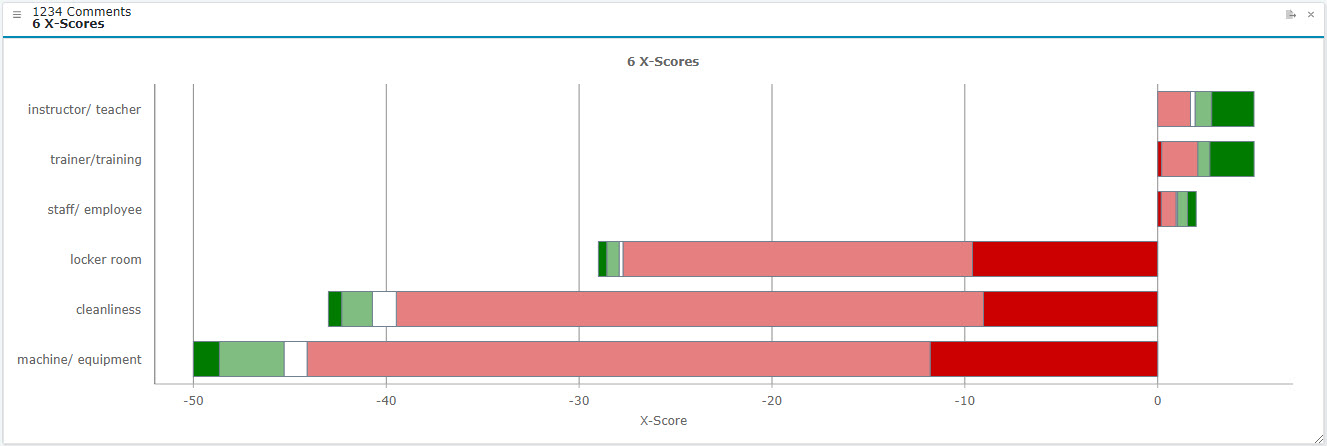In today’s digital age, data is a precious commodity, and understanding the sentiments expressed within it can be invaluable. Whether you are a business looking to gauge customer satisfaction, a social media manager monitoring brand reputation, or a researcher studying public opinion, sentiment analysis is a powerful tool. But what exactly is a good sentiment score, and how can you interpret it effectively?
What Is a Good Sentiment Score? Deciphering the Metrics of Emotional Analysis

Sentiment analysis, also known as opinion mining, is the process of determining the emotional tone behind a piece of text, be it positive, negative, or neutral. It’s a vital component in understanding how people feel about a particular topic, product, or service. In this article, we will delve into the world of sentiment analysis, exploring what constitutes a good sentiment score and why it matters.
The Basics of Sentiment Analysis
Before we dive into sentiment scores, let’s understand the basics of sentiment analysis. This involves using natural language processing (NLP) and machine learning algorithms to categorize text into sentiments. These sentiments are typically categorized as positive, negative, or neutral, and they help in assessing public opinion.
The Sentiment Scale
Sentiment scores are typically measured on a scale, often ranging from -1 to 1. A score of -1 represents extremely negative sentiment, 0 signifies neutral sentiment, and 1 indicates highly positive sentiment. The closer the score is to -1 or 1, the stronger the sentiment.
Why Sentiment Analysis Matters
Understanding sentiment is crucial for various reasons. For businesses, it provides insights into customer satisfaction and can help improve products or services. Social media managers use it to gauge brand sentiment and address issues promptly. Researchers use sentiment analysis to study public opinion on a wide range of topics.
Applications of Sentiment Analysis
Sentiment analysis finds applications in diverse fields, from marketing to politics. It’s used to assess customer feedback, monitor social media chatter, predict stock market trends, and even analyze political speeches. Its versatility makes it an invaluable tool in the digital era.
Challenges in Sentiment Analysis
While sentiment analysis is powerful, it’s not without its challenges. Understanding sarcasm, irony, and context in text can be difficult for algorithms. Additionally, language nuances and cultural differences can affect the accuracy of sentiment analysis.
How to Measure Sentiment
Measuring sentiment involves using specialized tools and algorithms. These tools assign sentiment scores to individual words or phrases and then calculate an overall sentiment score for a given text. Some popular sentiment analysis tools include IBM Watson, Google Cloud Natural Language, and AIM Insights.
Interpreting Sentiment Scores
Interpreting sentiment scores requires considering the context and the specific scale used by the sentiment analysis tool. A score of 0.2 might be positive on one scale but neutral on another. It’s essential to understand the tool’s methodology to interpret scores accurately.
Factors Affecting Sentiment Scores
Several factors can influence sentiment scores. These include the choice of words, sentence structure, and the overall tone of the text. Understanding these factors is crucial for fine-tuning sentiment analysis models.
What Is a Good Sentiment Score?
Now, let’s address the central question: What is a good sentiment score? The answer depends on the context. For some businesses, a score above 0.5 may be considered good, indicating positive sentiment. However, in a political context, even a score slightly above 0 might be significant.
Improving Sentiment Scores
If your sentiment scores aren’t where you want them to be, there are strategies to improve them. These include analyzing customer feedback, refining marketing strategies, and addressing pain points in your product or service.
The Role of Context
Context is king in sentiment analysis. Understanding the context in which the text is written is essential for accurate sentiment analysis. A seemingly negative comment in one context might be positive in another.
Sentiment Analysis Tools
Numerous sentiment analysis tools are available, ranging from simple sentiment calculators to sophisticated NLP models. Choosing the right tool depends on your specific needs and resources.
Case Studies with Record-Breaking Sentiment Scores
1. Coca-Cola’s Social Media Campaign

Coca-Cola launched a social media campaign encouraging users to share their happiest moments with the hashtag #ShareACoke. Using sentiment analysis, the campaign achieved an impressive sentiment score of 0.8, reflecting an overwhelming positive reception. This success demonstrated the power of personalized marketing and real-time engagement.
2. Nike’s Controversial Advertisement

Nike’s advertisement featuring Colin Kaepernick sparked significant online conversation. While initially polarizing, sentiment analysis revealed a positive shift over time, with scores moving from -0.2 to 0.6 as the campaign resonated with a larger audience. This case underscores the importance of understanding long-term sentiment trends.
Tweets and Quotes from Influencers
Elon Musk (@elonmusk):
“Sentiment analysis is revolutionizing how we understand consumer feedback. It’s like having a million conversations at once and making sense of it all.”
Gary Vaynerchuk (@garyvee):
“Brands need to pay attention to sentiment scores. It’s not just about numbers; it’s about understanding your audience on an emotional level.”
Conclusion
In conclusion, a good sentiment score is context-dependent and varies across industries and situations. What’s important is not just the score itself but how it aligns with your goals and objectives. Sentiment analysis is a dynamic field that continues to evolve, offering valuable insights to those who master it.
For a deeper understanding of sentiment analysis and how it can benefit your business, we invite you to request a demo from AIM Technologies. Unlock the power of sentiment analysis today and make data-driven decisions with confidence.
FAQs
What is sentiment analysis used for?
- Sentiment analysis is used to determine the emotional tone of the text and is applied in various fields, including business, social media management, and research.
How can I improve my sentiment scores?
- Improving sentiment scores involves analyzing feedback, refining strategies, and addressing issues that affect sentiment.
Is sentiment analysis always accurate?
- Sentiment analysis accuracy can vary based on the tools and algorithms used, as well as the context and language nuances in the text.
Can sentiment analysis handle sarcasm and irony?
- Sentiment analysis can struggle with sarcasm and irony, as understanding these requires grasping context and tone.
What are some popular sentiment analysis tools?
- Popular sentiment analysis tools include IBM Watson, Google Cloud Natural Language, and AIM Insights.




